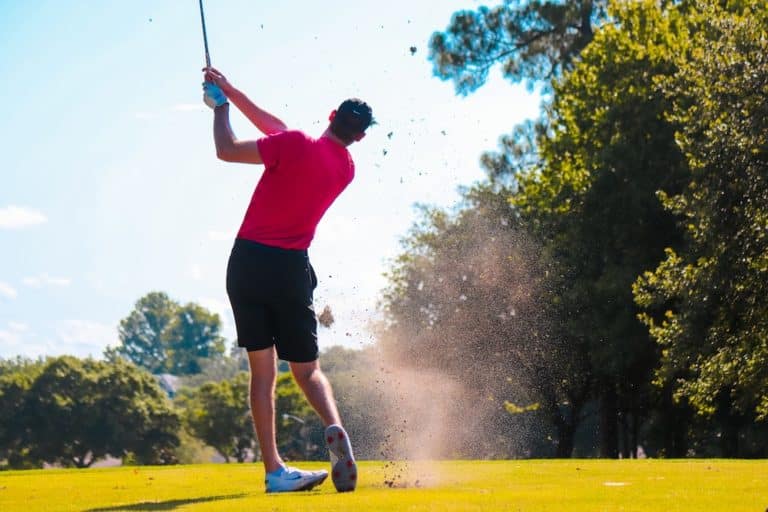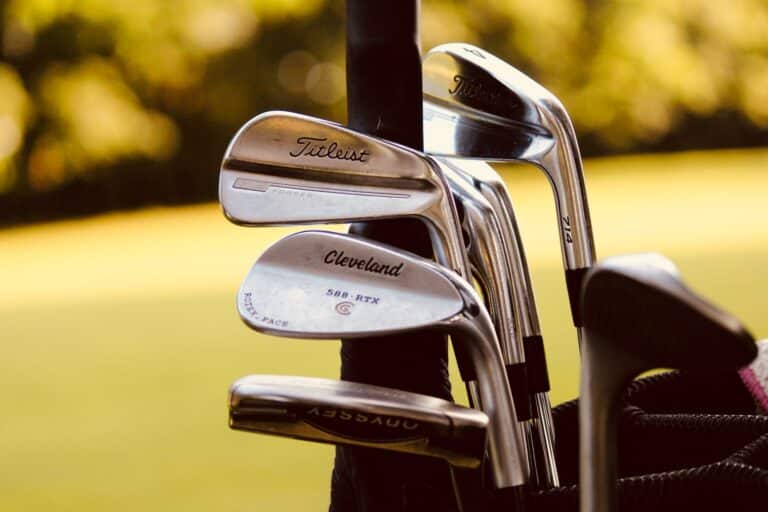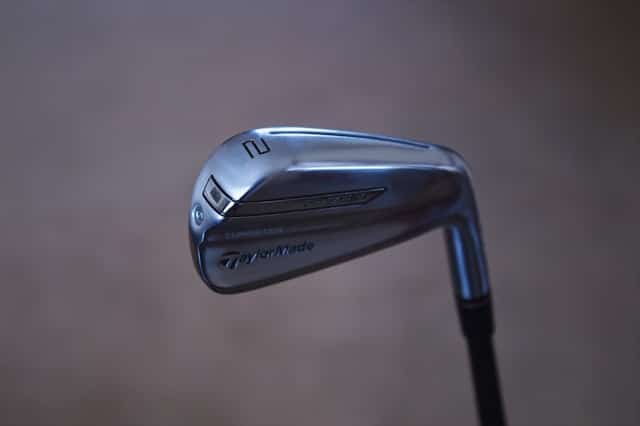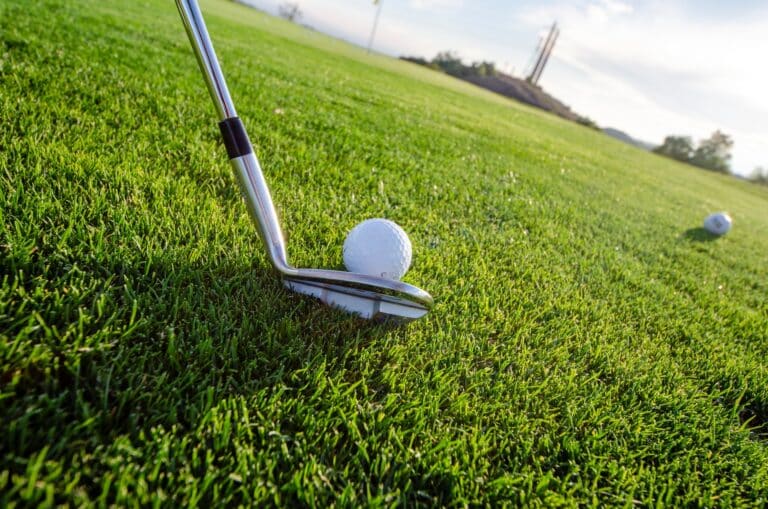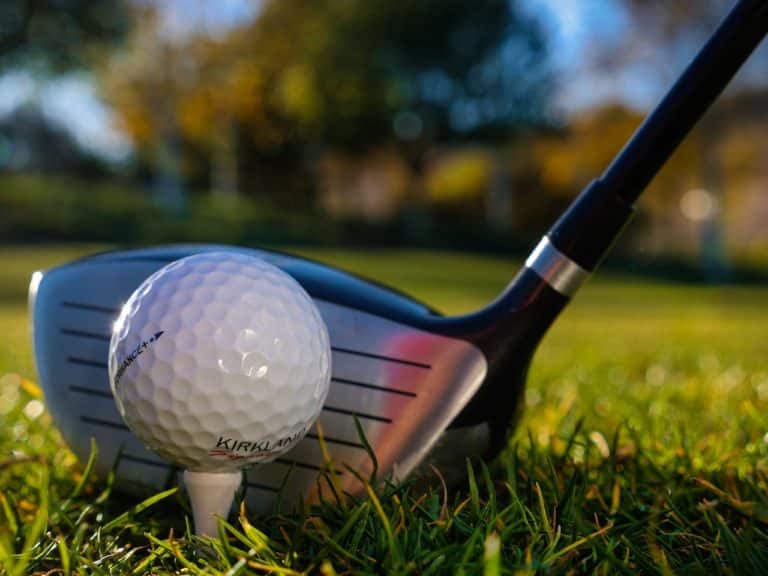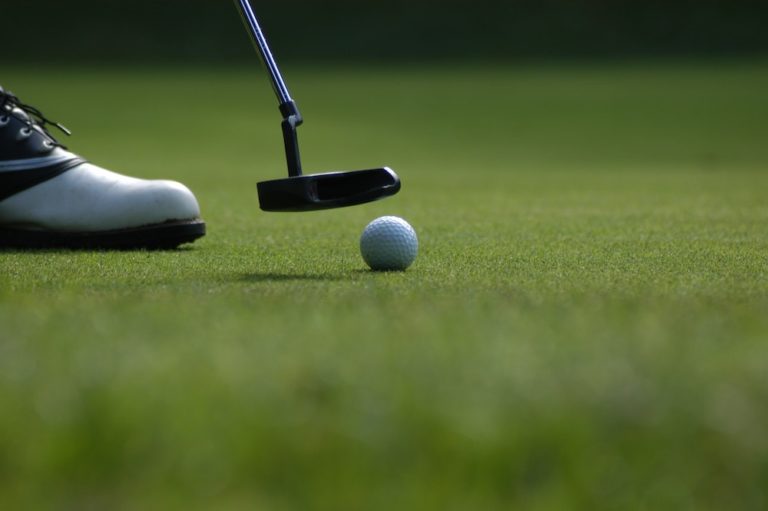Have you ever watched a golf tournament on TV and seen someone put a massive amount of backspin on the golf ball?
It’s pretty impressive.
I bet you even thought there was no way you could ever do that with a golf shot. Well, backspin isn’t just for the professionals. Even amateur golfers can learn how to put backspin on a golf ball.
When I was younger, nearly all my shots would hit the green and then roll toward the back. If the pin were on the front of the green, it would make for a very long putt.
Had I understood how to put spin on a golf ball, I could have aimed toward the back of the green and then pulled the ball back toward the hole.
Well, within this article, I’m going to provide you with some tips to help you learn how to put backspin on a golf ball so you can do what I was never able to do.
Understanding Backspin in Golf and Its Importance
Backspin in golf refers to the rotation of the golf ball in the direction opposite to its trajectory. You get backspin by striking the ball with a descending blow and making contact with the clubface slightly below the middle of the ball. This will cause the ball to spin backward as it travels through the air.
The primary reason golfers want to have backspin is to control the ball’s ability to stop on the green. It enables golfers to be aggressive when aiming for the hole, knowing the ball will not run off the back of the putting surface.
5 Tips for How to Put Backspin on a Golf Ball
Ready to learn how to add spin to your golf ball? Here are five tips you can implement.
Using a High Spin Golf Ball to Achieve Desired Backspin
The type of golf ball you use can significantly impact your ability to generate backspin. High-spin golf balls are designed specifically to increase the ball’s rotation in flight, thereby aiding in achieving the desired backspin.
These balls are typically composed of multiple layers, including a soft outer cover, which enhances friction between the ball and the club face during impact. The increased friction, coupled with the downward strike of the club, encourages the ball to spin rapidly in the opposite direction of its flight, creating the coveted backspin effect.
Remember, while high-spin balls may help create more backspin, they require a degree of skill to control. Therefore, it is essential to practice regularly and understand how different balls behave under varied conditions.
Creating Backspin Through a Steeper Swing
The swing path you adopt plays a crucial role in generating backspin. A steeper golf swing can be highly effective in creating a more pronounced backspin on the golf ball. This steep approach to the ball creates a more descending blow, which is a vital ingredient for backspin.
To achieve this, position the ball further back in your stance during your setup. This placement encourages a downward hit on the ball. The steeper angle of attack will help you maximize spin as the grooves on the clubface interact more dramatically with the golf ball at impact.
Practice this technique on the driving range to perfect your execution before integrating it into your golf game on the course. This approach will not only improve your ability to create backspin but also enhance your overall control and accuracy in golf.
Understanding the Impact of The Lie of Your Golf Ball on Backspin
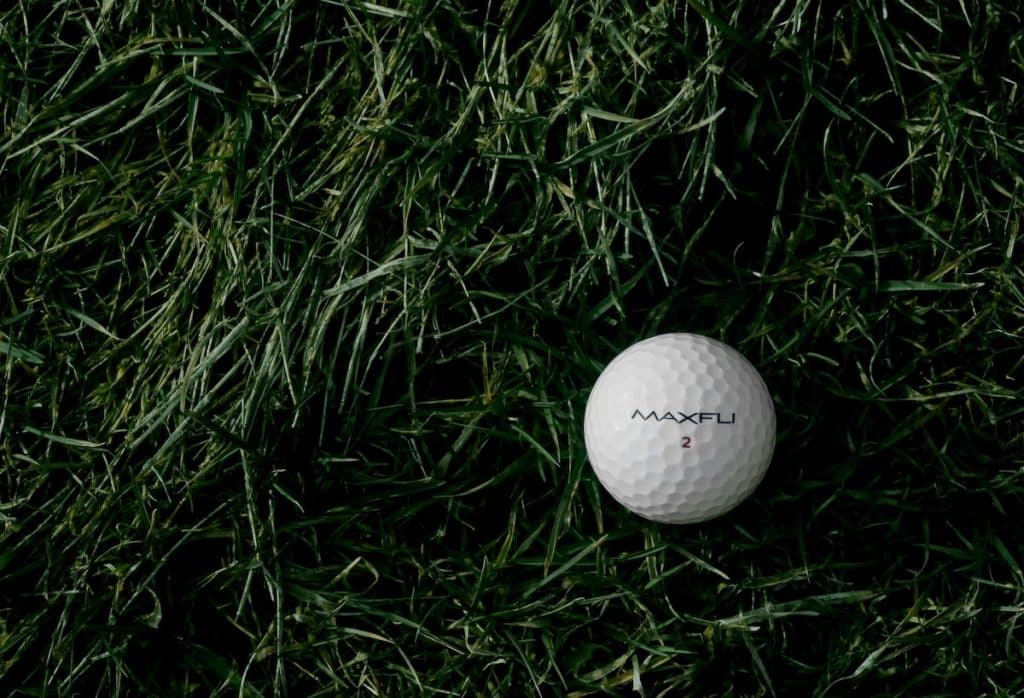
The lie of your golf ball significantly influences your ability to create backspin. A clean lie, such as on the fairway, where there is minimal interference between the club head and the ball, is ideal for getting impressive backspin on the ball.
However, if your ball lies in the rough where a considerable amount of tall grass or other elements can interfere with the club head, generating backspin becomes significantly more challenging. The grass between the clubface and the ball disrupts the impact required for creating spin, often leading to less controlled and unpredictable shots.
That being said, it is crucial to take the lie of your ball into account when planning your shots. With practice, understanding, and adjustment of your shots based on your ball’s lie, you can enhance your ability to produce backspin, even in less-than-ideal conditions.
Increasing Clubhead Speed for Enhanced Backspin
Your clubhead speed is another essential factor when generating backspin on your golf shots. An increased clubhead speed allows you to hit the ball harder, resulting in the club’s grooves gripping the ball more effectively and generating a higher backspin rate.
However, it’s crucial to remember that raw speed alone isn’t enough. The strike must still be clean, and the swing path and ball contact should be correctly aligned. Also, a faster swing speed requires more control to ensure the ball goes in the desired direction.
To increase your club speed, focus on improving your swinging technique, strengthening your golf muscles, and using a driver with the correct flex rating for your swing speed. Regular driving range sessions and exercise, including golf-specific workouts, can enhance your power and speed over time.
Importance of Clean Golf Clubs for Putting Backspin on the Ball
The condition of your golf clubs significantly influences your ability to generate backspin. Just as tall grass or other elements can interfere with the club head’s clean contact with the ball, dirt, and debris accumulated on the club face can also affect the ball’s spin.
When your golf club is dirty, the grooves can’t engage effectively with the ball at the point of contact. These grooves are crucial since they allow the club face to grip the ball, allowing you to create the desired amount of spin. When these grooves are clogged with dirt, they can’t fulfill their role, leading to less controlled and unpredictable shots.
Regular cleaning of your golf clubs is crucial. Cleaning the clubs can be as simple as using a wet golf towel or a specialized brush to remove any dirt or debris lodged in the grooves.
The Bottom Line – Adding Backspin on a Golf Ball
Adding backspin to a golf ball is both an art and a science. It involves using the right golf ball, having a steeper swing path, understanding the lie of your ball, increasing the speed of your clubhead, and maintaining clean golf clubs. Each of these elements plays a crucial role in your ability to generate the desired backspin on your shots. With consistent practice, a proactive approach to learning, and a focus on finesse and control, you can master the art of adding backspin to your golf shots.
Frequently Asked Questions
Is It Difficult To Generate Backspin On A Golf Ball?
Generating backspin on a golf ball can be challenging for beginners and some intermediate players. It requires a combination of several factors, including the right golf ball, a clean lie, a steeper swing path, and increased clubhead speed. Each element must be correctly applied and finely tuned to create the desired backspin.
How Do You Put Backspin on a Golf Ball With a Wedge?
To put backspin on a golf ball with a wedge, you must first ensure a clean contact with the ball. Position it more towards the back of your stance, which allows for a steeper descent of the clubhead. Your clubface should be open to create loft, and you should strike the ball before the ground, sweeping it off the turf. The swing speed should be high, as a faster clubhead can generate more spin. Above all, the grooves of your wedge need to be clean to produce maximum spin on the ball. With practice, you can fine-tune this technique and consistently add backspin to your shots with a wedge.
Why Do My Wedges Not Spin Back?
If your wedges are not creating backspin, several factors could be at play. First, the condition of your clubs matters. If your wedges are worn out or the grooves are filled with dirt, they won’t grip the ball effectively to create enough spin. Secondly, your ball choice could also impact backspin. Lower-quality balls or those not designed for spin won’t react the same way as premium, spin-enhanced golf balls would. Third, your swing technique could be the issue. If you’re not striking the ball cleanly or aren’t using a steep enough swing path, you may struggle to generate the desired backspin. Lastly, the lie of your ball can also influence spin. If the ball is sitting down in the rough, it’s harder to get the clean contact needed for significant backspin.
How Do You Hit Chips With Backspin?
Hitting chips with backspin involves a few key principles. Like other clubs, there needs to be clean contact with the ball, which should be positioned towards your back foot. Try to strike the ball with the clubface before making contact with the ground.
Sean’s parents first put a golf club in his hands at the age of 8. He immediately fell in love with the game of golf. Today he’s passing on that love to his own kids.

